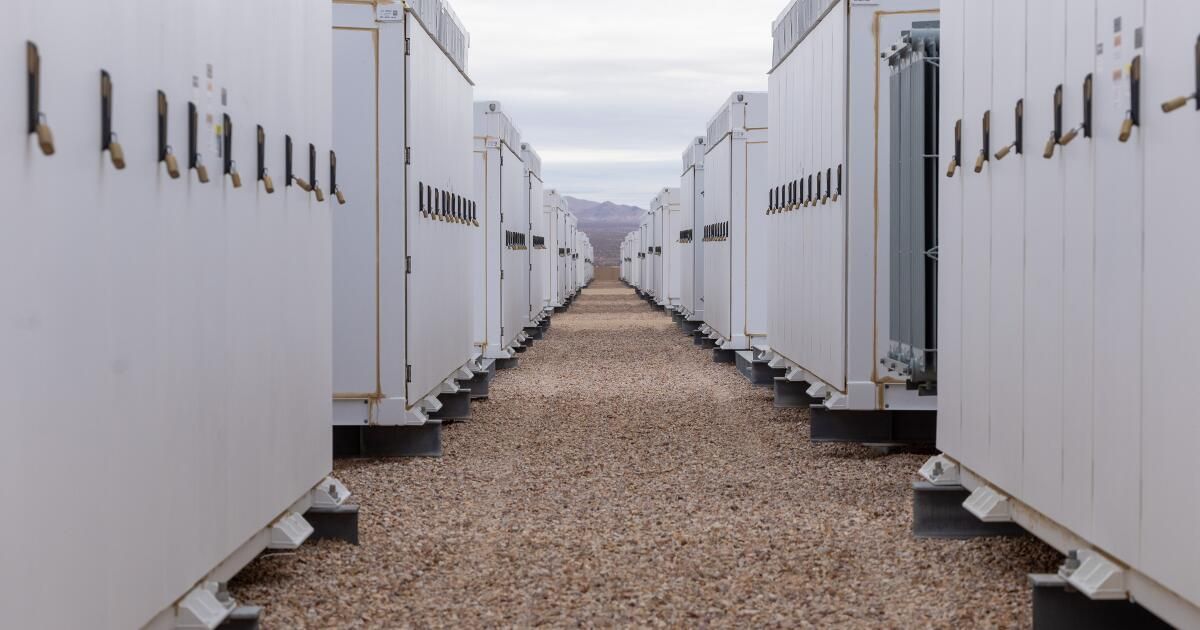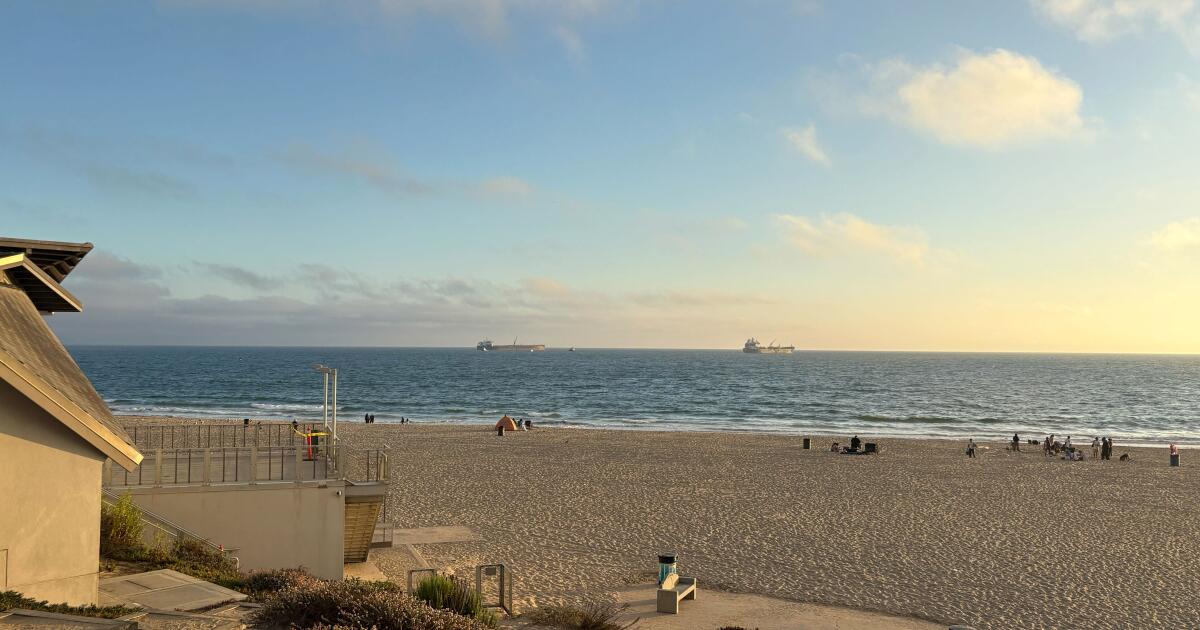For decades, rolling blackouts and urgent calls for energy conservation were a part of life in California: a reluctant summer ritual almost as reliable as the heat waves that caused them. But the state has seen a quiet shift in recent years, and the California Independent System Operator has not issued a single such emergency request, known as Flex Alerts, since 2022.
Experts and officials say the Golden State has reached a tipping point, reflecting years of investment to make its power grid stronger, cleaner and more reliable. Much of that is energy storage in new batteries, which capture and store electricity for later use.
In fact, the batteries have been transformative for California, state officials say. In the late afternoon, when the sun stops shining on the solar panels and people are at home using electricity, the batteries now push the stored solar energy into the grid.
California has invested heavily in the technology, helping it mature and become cheaper in recent years. Battery storage in the state has grown more than 3,000% in six years, from 500 megawatts in 2020 to more than 15,700 megawatts today.
“There is no doubt that the battery fleet that has grown rapidly since 2020, along with the state's expanding portfolio of other supply- and demand-side resources, has been a true game-changer for reliability during summer periods of peak demand,” said Elliot Mainzer, president and CEO of CAISO.
It was just five years ago that an unprecedented heat wave pushed the grid to its limits and plunged much of the state into darkness. In the wake of that event, California energy leaders vowed to take steps to make the grid more resilient.
Since then, CAISO has overseen a massive buildout of new energy and storage resources, including more than 26,000 megawatts of new capacity overall, which has also helped make the grid more stable, Mainzer said. The state has not seen rolling blackouts since 2020.
“Extreme weather events, wildfires and other emergencies can pose reliability challenges for any massive electrical system,” he said. “But the CAISO battery fleet, along with additional capacity and close coordination with state and regional partners, has provided an undeniable benefit to reliability.”
Batteries are now key to California's climate goals, including its mandate of 100% carbon neutrality by 2045.

Solar panels and battery storage units at the Eland Solar and Storage Center in Kern County's Mojave Desert on November 25, 2024.
(Brian van der Brug/Los Angeles Times)
Batteries have already enabled the grid to operate with dramatic reductions in the use of planet-warming fossil fuels. They are now becoming a more cost-effective and reliable replacement for aging gas-fired power plants, according to Maia Leroy, founder of California energy consulting firm Lumenergy LLC and co-author of a recent report on the rise of battery storage over gas generation in California.
“Historically, Flex Alerts have always come in the summer, when it's really hot and everyone is turning on the air conditioning,” Leroy said. “But also in the summer, we're seeing gas plants underperform because combustion doesn't work well in the ambient heat. So when we can shift that need from having to use gas plants to something more stable, dispatchable and flexible like battery storage, then we'll be able to meet that demand in the summer without having to rely on those underperforming gas plants.”
However, energy storage in batteries is not without challenges. Lithium-ion batteries, the most common type used for energy storage, typically have four to six hours of capacity. It's enough to sustain the grid during peak hours when the sun goes down, but it can still leave some gaps that must be filled with natural gas.
Nikhil Kumar, program director at the energy policy nonprofit GridLab, said the technology already exists for longer-lasting batteries, including through different chemistries, such as iron-air batteries, which release energy through oxidation, and flow batteries, which store energy in liquid chemicals that flow through a reactor.
Those batteries are not yet as mature and may be more expensive and larger than their lithium-ion counterparts, Kumar said. But a recent report from GridLab indicates that the equation is changing: The average cost of a new gas plant is often on par with that of four-hour lithium-ion batteries and only slightly less expensive than longer-duration battery technologies.
“Batteries are going to get cheaper,” Kumar said. “Gas is not.”
The shift in battery storage is coming as the Trump administration moves to stifle solar power and other forms of renewable energy in favor of fossil fuels like oil, gas and coal. At the end of September, the administration announced that open 13 million acres of federal lands for coal mining and provide $625 million to return to service or modernize coal-fired plants, which officials said would help strengthen the economy, protect jobs and advance American energy.
During an hour-long news conference about the initiative, Interior Secretary Doug Burgum described wind and solar power as intermittent sources that “literally depend on the weather,” but neither he nor any other official mentioned the growth in battery storage that has made those sources more reliable and promising.
It is not a partisan issue. ERCOT, which operates Texas' power grid, has more than 14,000 megawatts of batteries online, a nearly triple increase since the beginning of 2023. California and Texas are constantly trading places as the top state for battery storage.

Battery storage units at Elland Solar and Storage Center in Kern County's Mojave Desert on Nov. 25, 2024.
(Brian van der Brug/Los Angeles Times)
But Trump has taken steps to support battery production in the U.S. Currently, about three-quarters of the world's batteries are made in China, and Trump's tariffs (including a proposed 100% tariff on China) have been good for at least one Sacramento-based battery maker, Sparkz.
“The administration wants manufacturing of critical materials to happen in the United States,” said Sanjiv Malhotra, founder and CEO. “Basically they are very much in favor of domestic battery manufacturing.”
Sparkz is making lithium iron batteries that do not use nickel or cobalt, a composition that has long been an industry favorite but relies on imported metals. Instead, its lithium iron phosphate batteries have a supply chain based entirely in the U.S., meaning they can take advantage of federal tax credits that favor the production of clean energy components made primarily with domestic parts, Malhotra said. The company's clients include data centers and utilities.
Malhotra added that California has done an excellent job “beefing up” the grid's storage capacity in recent years. He said batteries are one of the main reasons the state has not seen a Flex Alert since 2022.
“The numbers basically tell the story that it was all down to, essentially, energy storage,” he said.
There is still work to do. While the state's grid has seen improvements, it is more than a century old and was built primarily for gas plants. Experts and officials agree that additional substantial improvements and reforms are needed to meet current energy demands and goals.
Permitting is also a hurdle, as California typically requires a lengthy environmental review for new projects. The state, sometimes controversially, is now expediting review and recently approved a massive solar and battery storage farm, the Darden Clean Energy Project in Fresno County, through a new fast-track permitting program. It will produce enough electricity to power 850,000 homes for four hours, according to the California Energy Commission.
Security remains a considerable concern. In January, a fire devastated one of the world's largest battery storage facilities in Moss Landing, Monterey County. The facility housed about 100,000 lithium-ion batteries, which are exceptionally dangerous when ignited because they burn at extremely high temperatures and cannot be extinguished with water, which can trigger a violent chemical reaction. The fire released dangerous levels of nickel, cobalt and manganese that were measured miles away.
“When it comes to big technologies in general, there will always be some kind of danger,” said Lumenergy's Leroy. “This points to the great need to diversify the technologies we use.”
Other forms of energy, such as oil and coal, also pose considerable health and safety risks, including the emission of air pollution: soot, mercury, nitrogen dioxide and carbon dioxide, which contribute to climate change.
California is in the process of phasing out coal-based power and hopes to be completely coal-free by November. And while natural gas still makes up a large portion of the state's portfolio, renewables accounted for nearly 60% of the state of California's electricity generation in 2024, according to the U.S. Energy Information Administration.
The figures continue with an upward trend. In the first six months of this year, CAISO's grid was powered with 100% clean energy for an average of almost seven hours each day.
“We literally just demonstrated that California is capable of running on super-clean resources, backed by natural gas,” GridLab's Kumar said. “And it works. We don't have flexible alerts.”












